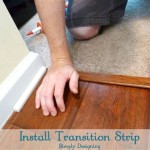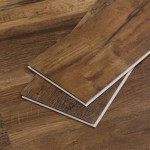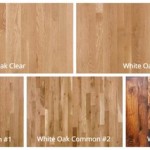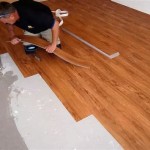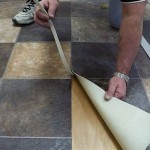The Best Way to Cut Laminate Flooring Around Radiator Pipes
Installing laminate flooring can significantly enhance the aesthetic appeal of a room. However, navigating obstacles such as radiator pipes requires precision and careful planning. Achieving a professional-looking finish around these fixtures necessitates understanding the properties of laminate flooring and employing appropriate cutting techniques. This article provides a detailed guide on the best method for cutting laminate flooring around radiator pipes, ensuring a snug fit and a seamless appearance.
Before commencing the installation process, it is crucial to gather the necessary tools and materials. These include the laminate flooring planks, a pencil, measuring tape, a jigsaw or hole saw (depending on the method chosen), a drill, safety glasses, a utility knife, and spacers. Proper preparation ensures a smooth and efficient workflow.
Accurate Measurement and Marking
The initial step involves accurately measuring the distance from the wall to the center of the radiator pipe. This measurement will determine the precise location of the hole that needs to be cut into the laminate flooring plank. It is advisable to measure the diameter of the pipe as well. This measurement dictates the size of the hole to be cut, remembering to add a small allowance (approximately ¼ inch) for expansion and contraction of the laminate due to temperature and humidity variations. This allowance prevents the flooring from buckling or warping over time.
Transfer the measurements onto the laminate plank. Using a pencil and straight edge, carefully mark the center point for the pipe. Ensure the markings are clear and easily visible. Double-check the measurements to minimize errors. Inaccurate measurements can lead to wasted materials and a less-than-desirable finish. It's often helpful to use a small piece of scrap laminate to practice the cutting technique and confirm the hole size before committing to the final plank.
Once the center point is marked, use a compass or a circle template (if available) to draw a circle representing the pipe's diameter, including the expansion allowance. This circle will serve as a guide for cutting the hole. The clarity and accuracy of this circle are paramount to achieving a clean and precise cut.
Selecting the Appropriate Cutting Technique
There are primarily two methods for cutting laminate flooring around radiator pipes: using a jigsaw and using a hole saw, each suited to slightly different situations and preferences. The choice depends on the available tools and the desired level of precision.
Method 1: Using a Jigsaw
The jigsaw method involves cutting a wedge-shaped section from the laminate plank, allowing it to be fitted around the pipe. This method is well-suited for situations where the pipe is very close to the wall, or where a perfectly circular cut is not essential. Start by drilling a pilot hole inside the marked circle. This hole provides a starting point for the jigsaw blade.
Insert the jigsaw blade into the pilot hole and carefully follow the circle's outline. Maintain a steady hand and use a slow, controlled cutting speed to prevent chipping or splintering of the laminate. Once the circle is cut, use a utility knife to gently score a line from the edge of the plank to the circular cut-out. This score line represents the wedge that needs to be removed. Use the jigsaw to carefully cut along the score line, creating the wedge shape. The resulting piece should resemble a "pac-man" shape.
Test-fit the plank around the radiator pipe. If necessary, use a sanding block or file to refine the edges of the cut-out, ensuring a snug and aesthetically pleasing fit. The aim is to minimize any visible gaps and create a seamless transition between the flooring and the pipe.
Method 2: Using a Hole Saw
For a perfectly circular cut, a hole saw is the preferred tool. Hole saws are available in various diameters, allowing for precise matching to the pipe's diameter plus the expansion allowance. Select a hole saw that is slightly larger than the outside diameter of the radiator pipe.
Place the laminate plank on a stable work surface. Position the hole saw directly over the marked center point and firmly press down. Start the drill at a slow speed and gradually increase it as the blade starts to bite into the laminate. Apply consistent pressure and maintain a perpendicular angle to ensure a clean and accurate cut.
Once the hole is cut, carefully remove the circular piece of laminate. Similar to the jigsaw method, a wedge-shaped section needs to be removed to allow the plank to fit around the pipe. Use a utility knife to score a line from the edge of the plank to the circular cut-out, and then use a jigsaw or utility knife to carefully cut along the score line, creating the wedge shape.
Test-fit the plank around the radiator pipe. Fine-tune the edges of the cut-out with a sanding block or file as needed to achieve a perfect fit. This method typically results in a cleaner and more professional-looking finish compared to the jigsaw method, especially for larger diameter pipes.
Ensuring a Clean and Professional Finish
Regardless of the chosen cutting method, several steps are crucial to ensure a clean and professional finish. These steps involve preparing the subfloor, using appropriate spacers, and employing sealant or pipe collars.
Subfloor Preparation
Before installing any flooring, ensure the subfloor is clean, level, and dry. Any imperfections in the subfloor can affect the stability and appearance of the laminate flooring. Fill any cracks or holes with a suitable patching compound and sand down any high spots. A level subfloor is essential for a smooth and even surface.
Using Spacers
When laying the laminate flooring, use spacers along the walls to maintain a consistent expansion gap. This gap allows the flooring to expand and contract without putting pressure on the walls, preventing buckling or warping. The recommended expansion gap is typically between ¼ inch and ⅜ inch, depending on the manufacturer's recommendations.
Sealing and Pipe Collars
To conceal the expansion gap around the radiator pipe and provide a watertight seal, consider using pipe collars or sealant. Pipe collars are pre-fabricated rings that fit around the pipe and cover the gap. They are available in various colors and styles to match the flooring.
Alternatively, use a flexible sealant, such as silicone caulk, to fill the gap. Choose a sealant that matches the color of the flooring for a seamless appearance. Apply the sealant carefully and smoothly, ensuring it adheres to both the flooring and the pipe. Use a wet finger or a caulking tool to smooth the sealant and remove any excess.
Addressing Uneven Cuts
Even with careful measurement and cutting, minor imperfections may occur. If the fit around the pipe is not perfect, use a wood filler or color putty that matches the flooring to fill any small gaps. Sand the filler smooth once it has dried and wipe away any excess dust. For larger gaps, consider using a pipe collar or adding a small trim piece to cover the imperfection.
Safety Considerations
Prioritizing safety is paramount throughout the laminate flooring installation process. Always wear safety glasses to protect your eyes from flying debris. Use caution when handling sharp tools, such as utility knives and jigsaws. Follow the manufacturer's instructions for operating power tools. Work in a well-ventilated area to minimize exposure to dust and fumes. Consider wearing a dust mask, especially when sanding or cutting laminate.
By following these detailed steps and employing the appropriate cutting techniques, achieving a professional and aesthetically pleasing laminate flooring installation around radiator pipes is readily attainable. Precision, patience, and adherence to safety guidelines are essential for a successful outcome.

How To Cut Engineered Wood Laminate And Lvt Around Pipes Flooring Mountain

How To Cut Around Radiator Pipes And Other Obstacles Advice Centre

Junckers Working Around A Radiator Pipe

How To Cut Engineered Wood Laminate And Lvt Around Pipes Flooring Mountain

How To Get Around Radiator Pipes Laminate Flooring Installing Tips 7

How To Cut Engineered Wood Laminate And Lvt Around Pipes Flooring Mountain

How To Cut Engineered Wood Laminate Lvt Around Pipes

Fitting Laminate Flooring Around Radiator Pipes Discount Depot

How To Cut Around Radiator Pipes And Other Obstacles Advice Centre

Radiator Pipe Covers Blog Floorsave
Related Posts

